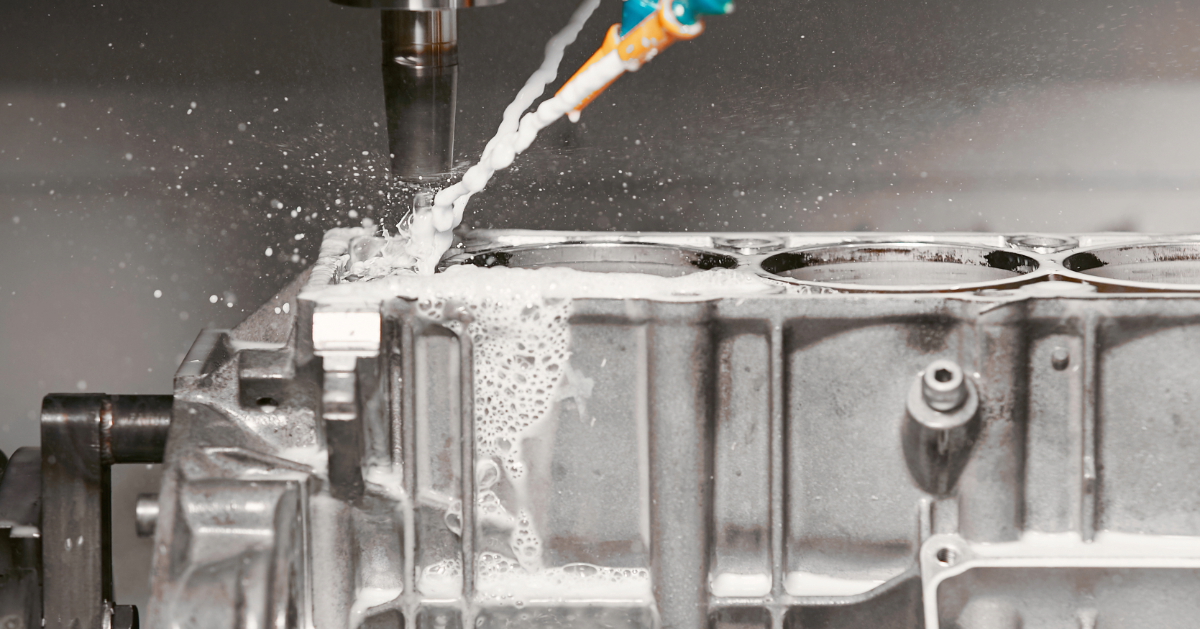
You may also like:
Wear Resistant Designs: Engineering for Longevity
Machining Heat-Resistant Alloys: Advantages and Challenges
Tooling Selection: Optimizing for Performance and Tool Life
Coolants in machining and other metalworking fluids (MWFs) are undergoing a transformation driven by three intersecting forces: performance demands, health and safety regulations, and sustainability goals. As machining continues to evolve with harder materials, tighter tolerances, and higher cutting speeds, the humble coolant has never played a more critical—and complex—role in modern manufacturing.
Coolants Under Pressure: The Need for Performance & Precision
The global market for metalworking fluids is expected to grow to $15 billion by 2025, underscoring their critical importance in manufacturing. Coolants do far more than just keep machines from overheating. They:
- Remove chip debris
- Protect against rust
- Improve tool life
- Maintain surface finishes
- Prevent metal deformation
Yet, as machining technology advances—such as high-speed operations and pressures reaching 1,200 psi—the demands on coolant systems have intensified. Coolant formulations must now be engineered for materials like titanium, Inconel, and high-strength steels, which require superior lubricity and heat dissipation to prevent tool wear and part distortion.
Health and Safety: Reformulating for Human Operators
While performance remains a top priority, health and safety concerns are reshaping the chemistry behind MWFs. Common issues like skin irritation, mist inhalation, and chemical exposure have led to a global trend toward:
- Minimum Quantity Lubrication (MQL)
- Boron-free and chlorine-free formulations
- Elimination of secondary amines like DCHA
- Water-based and semisynthetic coolants
Coolants are being designed not just to work better—but to be safer to use. The right concentration (typically 5–10%) is essential: too little invites bacterial growth and corrosion, too much can cause skin issues and excessive foaming.
Fluid-makers today are rethinking what goes into their products. With regulators banning certain chemicals and localized water conditions affecting performance, formulation flexibility is key. Water hardness, for example, varies from Indiana to Kentucky, which means coolant chemistry often must adapt to local conditions.
Sustainability and the Push for Coolant Recycling
Sustainability isn’t just a buzzword in 2025—it’s a competitive advantage. One major trend reshaping the industry is the recycling of coolants to reduce waste and operating costs.
Recycling methods include:
- Filtration at the sump
- Oil wheels, belt and rope skimmers
- Centrifuge systems for tramp oil and chip removal
According to STLE Fellow John Burke, coolant recycling can reduce volume use by up to 8%. Companies like Castrol Industrial support recycling not only through best practices but also by helping customers design or source the right equipment. However, even recycled fluids have a shelf life. Over time, ion buildup (e.g., chlorides or calcium) can degrade fluid quality, requiring a full system recharge.
Coolant Trends in Automotive, Aerospace & Medical Machining
In advanced sectors, coolants are evolving to meet the challenge of lightweight, high-strength materials. For example:
- Automotive: Moving from aluminum to high-temp alloys
- Aerospace: Transitioning from 6000 series aluminum to titanium, favoring synthetics diluted with water
- Medical: Requiring clean, low-residue fluids that won’t interfere with sensitive components
Fluid-makers are also working closely with manufacturers on custom formulations, often testing fluids on patent-pending materials in labs and real-world plant environments. These partnerships help accelerate innovation and ensure coolants can keep up with the latest material science developments.
Final Thoughts: The Right Balance for the Future
Coolants in machining may be changing, but one truth remains constant: the right coolant, used at the right concentration, under the right conditions, makes all the difference. Whether it’s reducing wear on a tool, improving part quality, or keeping your operators safe, coolants are central to the machining process.
Coolant systems are more than just accessories—they’re strategic assets. As materials change and machines get faster, smarter, and cleaner, the fluid that keeps everything running smoothly must evolve too.